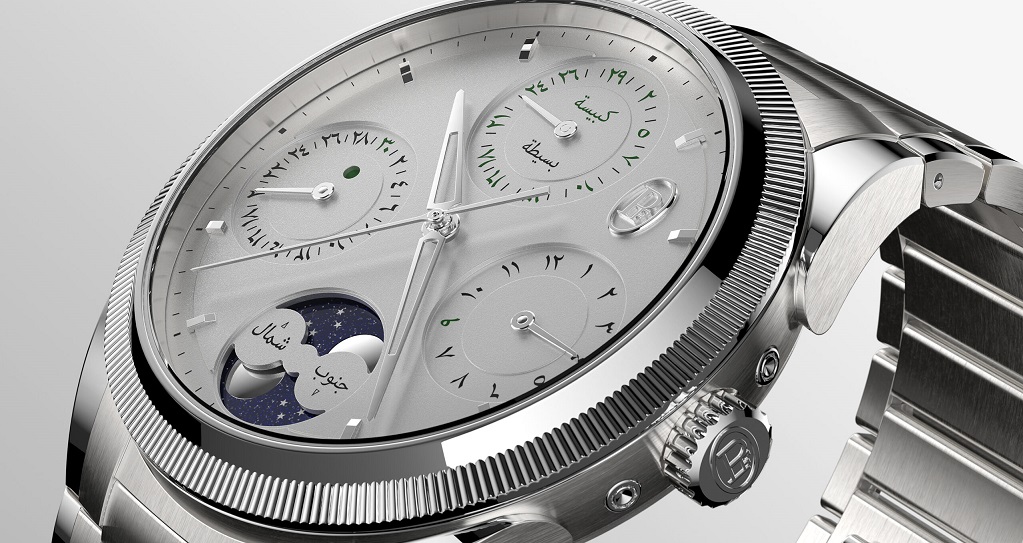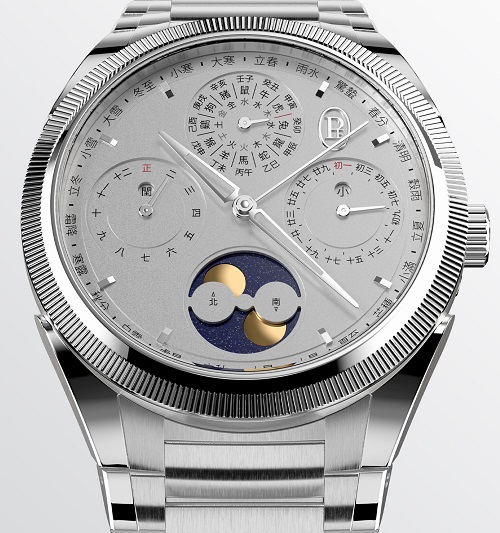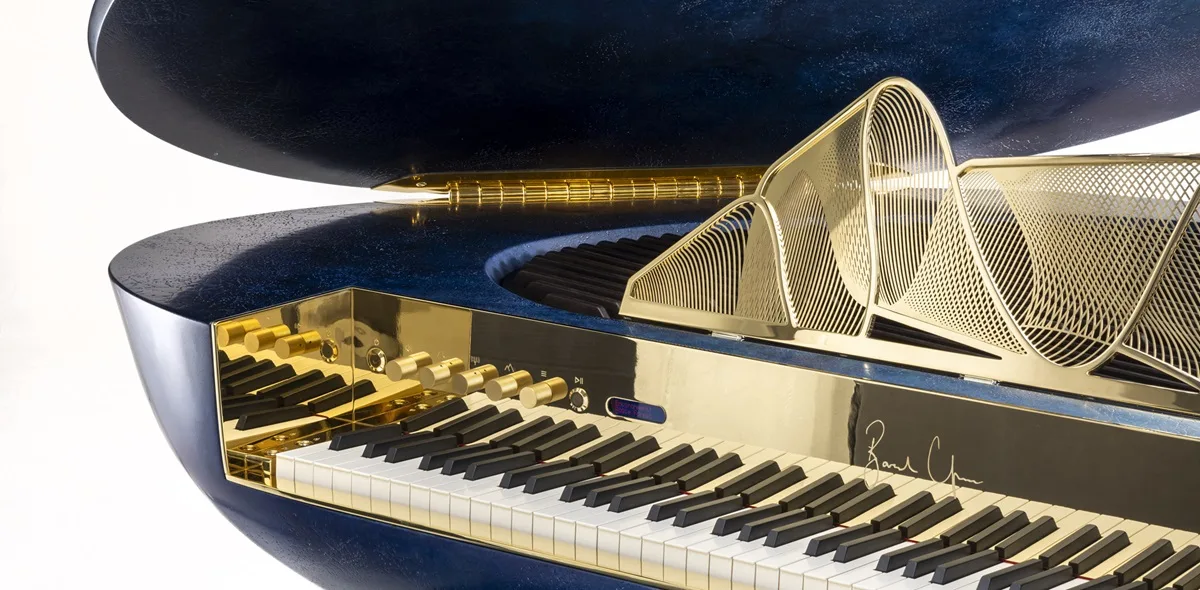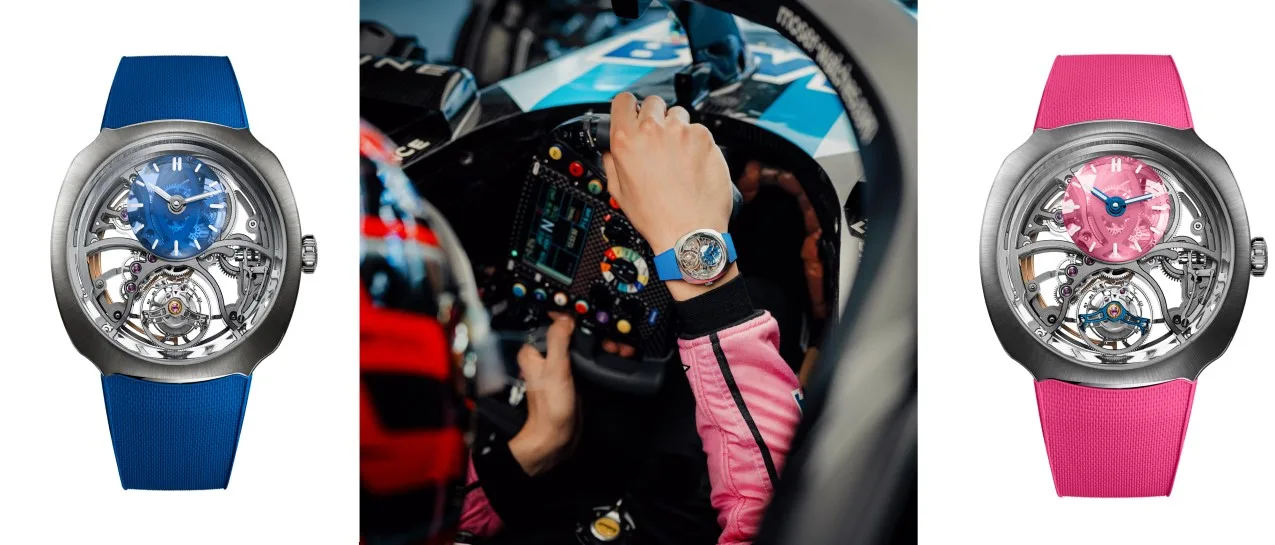In the late 18th century, the reverend William Paley used the “watchmaker analogy” as proof of the existence of a divine mind that shaped and governed the universe. The argument was that nature could be chaotic, but as it was not, what was observed was a grand design in the solar system and beyond. Like the clockwork motion of a watch, the movement of Earth through space followed a systematic orbit that was the result of God’s hand in defining its path. Civilisations, over time, have always looked to the night sky to find order in the movement of the Earth, the moon, and the patterns in the stars. But if you can find a grand design in the heavens, it depends on which heaven you believe in.
For the first time, three different calendars – reflecting distinct cultural perspectives on the seasonal rotation of the Earth and the moon – have been brought together under the same horological design by a watchmaker, Parmigiani Fleurier, and its Tonda PF Calendar watch.
This is no small feat. The problem for anyone attempting to impose mechanical order on planetary motion is the fact that while in the short term everything works – for example, 24 hours in a day – in the longer term anomalies creep in, such as the need every four years to add one extra day in the Gregorian calendar. While Paley’s proof appeared grounded in observation, it was nonetheless incomplete. Watchmakers know about the peculiarities of Earth’s orbital path, and that God does play dice with the universe.
The TONDA PF Gregorian Calendar displays two depictions of the Moon, viewed from the Earth’s Northern and Southern hemispheres.

Parmigiani Fleurier’s triptych is a representation of humankind’s views of the heavens and the imposition of some form of order within them. The three calendars are the Gregorian, which is the one mostly commonly used in the Christian world; the Hijri, which is followed throughout the Islamic faith; and the Xiali, which was used in China until 1912, but still governs the dates of important holidays. The problem is that each of the calendars require adjustments to the mechanism every so often because of the idiosyncrasies of Earth’s orbit.
The Gregorian calendar, which went into effect in October 1582 by order of Pope Gregory XIII, is solar based and well known to Western watchmakers. While the 24-hour day is accurate, variations about the calendar count in terms of weeks and months in the year create the need for adjustments. The seven-day week aggregates into months of varying length: 30 days, 31, 28 or – every four years – 29. The base assumption is that it takes 365 days for the Earth to orbit the sun, but the true solar cycle is 365.242, requiring Parmigiani Fleurier’s Gregorian calendar to be adjusted annually.

The TONDA PF Hijri Perpetual Calendar features solid gold hour-markers, a logo, and hands on a sandblasted platinum dial.
The Hijri calendar does not primarily worry about the duration of the Earth’s orbit but instead is concerned with the lunar cycle. The calendar consists of 12 lunar months in a year of 354 or 355 days. Consequently, in the Parmigiani Fleurier series, the watch is a perpetual, requiring no annual or short-term adjustment. The Hijri determines Islamic holidays and rituals, annual fasting and the season for the great pilgrimage. It enumerates the Hijri era, which starts in 622AD (Gregorian calendar). Therefore, we are currently at the end of the year 1444AH (Anno Hegirae), which has run since approximately 30th July 2022 and will finish on 18th July 2023.
The Xiali, or Chinese Traditional Complete Calendar, is the most ambitious and challenging of the triptych. Nobody is sure about dates, but it is thought to have been developed between 778BC and 476BC, under the Zhou dynasty, but was reformed during the late Ming dynasty with the assistance of Jesuit missionaries, who translated Western astronomical works and introduced new concepts. Its complexity derives from combining solar and lunar cycles, calculated separately, and then synchronised using an extra lunar or intercalary month. The Parmigiani Fleurier watch features a dial with the complex numbering system of the 10 Heavenly Stems and the 12 Earthly Branches, which correspond to the seasons, elements, planets, virtues and zodiac signs. Despite its complexity and completeness, the watch only requires adjustment every 12 years.
The TONDA PF Xiali features the complex numbering system of the ten Heavenly Stems and the twelve Earthly Branches.

This three-calendar set represents Parmigiani Fleurier’s unique and consistent approach to the watchmaker analogy across different beliefs about the heavens, showing horological prowess and ingenuity in the way the maison has worked out how to display information in a systematic and harmonious dial design. All are manufactured in platinum and produced in a limited edition of three. A separate Xiali calendar watch, with a steel and platinum case and an appropriate Imperial Red dial, is available separately.
Learn more about the Parmigiani Fleurier Cultural Calendars HERE.
Words: Dr Andrew Hildreth














Show Comments +